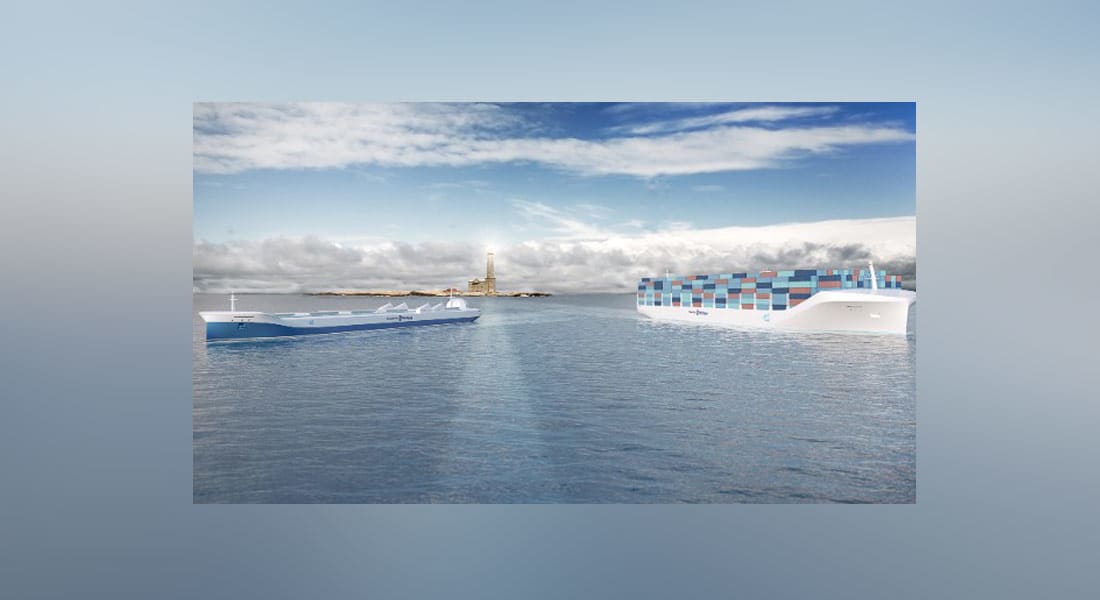(CNN) -- يشهد قطاع النقل ثورة تكنولوجية، لاستبدال القوة العاملة بوسائط نقل آلية تعمل بالتحكم عن بعد. وصممت بعض الشركات التكنولوجية والهندسية مؤخراً، وسائط نقل تعمل آلياً. وكشفت شركة "غوغل" النقاب عن سيارة من دون سائق، فيما تختبر شركة "أمازون" طائرة بدون طيار لشحن البضائع وتسليمها للمنازل.
ومن المتوقع، أن تحل التكنولوجيا الحديثة محل قبطان السفينة قريباً، وذلك بعد أن يتم إطلاق أسطول من سفن الشحن الآلية للإبحار عبر التحكم عن بعد.
وتتوقع شركة "رولز- رويس" البريطانية، أن تبحر سفن الشحن عبر البحار آلياً ومن دون قبطان خلال العقد المقبل، ولكن يعتمد هذا الأمر، على إعطاء الضوء الأخضر من قبل الجهات التنظيمية البحرية.
وفي ظل العديد من التساؤلات، حول هذه الرؤية المستقبلية لتطوير الشحن البحري، كشف نائب مدير الابتكار والهندسة والتكنولوجيا في "رولز رويس" أوسكار ليفاندير، عن تفاصيل مفهوم جديد لتصاميم السفن، قائلاً: "حان الوقت لإحداث تغيير جوهري في مجال الشحن البحري."
وأكد ليفاندير أن التكنولوجيا المعتمدة تتميز بدقة عالية، في التعامل مع بعض الظروف الجوية، مثل استخدام الكاميرا التي تعتبر أدق في الرؤية من العين المجردة.
من جهته، اعتبر سيمون بينيت في غرفة الشحن الدولية في لندن أن كثرة التكنولوجيا ستتسبب باعتماد الملاحين كلياً على النظر إلى شاشة موصولة بجهاز الكمبيتور، والتي قد لا تكون دقيقة مثل العين المجردة، الأمر الذي قد يتسبب بكارثة.
ورغم أن التصاميم التكنولوجية لسفن التحكم عن بعد باتت متوفرة، إلا أنه من غير المحتمل الحصول على موافقة الأنظمة البحرية في المستقبل القريب، بحسب ما أفاد ليفاندير.
وفي الوقت الذي تتحقق فيه هذه الرؤية المستقبلية لسفن الشحن البحري، سيتم نقل الطاقم إلى مراكز مراقبة على الساحل والعمل على استخدام كاميرا ترصد حركة أسطول من السفن وجهاز التحكم عن بعد.
وفي هذا السياق، قال ليفاندير: "إذا عدنا إلى التاريخ منذ 150 سنة، سنجد طاقماً مكون من 250 فرد يعملون على متن سفينة شحن عادية، الأمر الذي بدأ بالانخفاض منذ ذلك الوقت، حتى يبلغ بين 12و 15 شخصاً."
ونظراً لحلول أجهزة التحكم عن بعد محل الطاقم البشري، ستصبح مساحة السفن أكثر اتساعاً لحمل البضائع، وأخف وزنا ما يقلل من استهلاك الوقود. وأوضح ليفاندير أن "سفينة نقل عادية يمكن أن توفر وقود بنسبة 15 في المائة سنوياً، إذا أبحرت من دون طاقم."
وأشار بينيت إلى أن "الاتحادات سيكون لديها رأي في موضوع التخلي عن طاقم السفن،" مضيفاً أن "التكنولوجيا يجب أن تؤدي دور تكميلي لعمل البحارة ولا بد من خلق نوع من التوازن"، فضلا عن أهمية العنصر البشري في نظام الملاحة البحرية في حالة حصول أي خلل في نظام البحث التقني.
أما السلبيات الأخرى التي قد تؤخذ على السفن الآلية للتحكم عن بعد، فتتمثل بعدم قدرتها على التعامل مع المواقف الصعبة، في ظل مرونة القبطان وقدرته على إدارة السفينة في المواقف الصعبة.
ويتسائل بعض الأشخاص، فيما إذا كانت السفن المحملة بـ 99 في المائة من بضائع العالم لديها القدرة على الإبحار بأمان في محيط مفتوح من دون طاقم. ورأى ليفاندير أنه "بالنظر إلى حوادث السفن في يومنا الحالي، سنجد أن غالبيتها مرتبط بعوامل بشرية،" مضيفاً أن "الطاقم على متن السفينة لا يحصل على قسط كاف من الراحة، ويفقد التركيز على العمل. لذا فإن نقل العمل إلى الساحل سيمنح طواقم السفن بيئة عمل أفضل."
